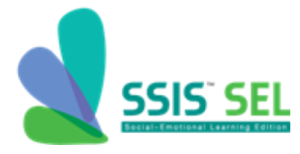Deliver Positive High-Expectations Classroom Practices
-
Module Introduction2 Topics
-
Applying School-wide Practices in the Classroom21 Topics|3 Tests
-
Cover
-
Lesson Objective
-
Opening the Lesson
-
The School-wide Behaviour Management Model
-
Positive High Expectations in the Classroom
-
Aligning Every Classroom with School-wide Values
-
Scenario: Aligning Classroom Rules with School-wide Values
-
Check Your Understanding
-
Tiers of Support
-
Video: Factors of Successful School Behaviour Models
-
Encouraging Expected Behaviour
-
Teaching Social-Emotional Learning (SEL) Lessons
-
Responding to Inappropriate Behaviour
-
Video: Using Effective Behaviour Management Strategies in a Positive High-Expectations Classroom
-
Defining Behaviours as Major or Minor
-
Scenario: Responding to a Minor Behaviour in the Classroom
-
Check Your Understanding
-
Family Partnerships
-
Test Your Understanding
-
Review
-
Lesson Completed
-
Cover
-
Setting Up the Classroom for Positive Behaviour19 Topics|3 Tests
-
Cover
-
Lesson Objective
-
Opening the Lesson
-
An Orderly Physical Space
-
Clutter-free Classroom
-
Classroom Traffic Flow
-
Scenario: Setting Up Smooth Transitions
-
Video: The Impact of the Physical Set Up of the Classroom
-
Check Your Understanding
-
Direct Instruction and Classroom Arrangements
-
Strategic Seating Charts
-
Check Your Understanding
-
Other Considerations for Strategic Seating
-
Active Supervision Through Strategic Classroom Arrangement
-
Scenario: Strategic Seating Arrangements
-
Video: Classroom Set Up Helps Students Respond to Classroom Routines and Expectations
-
Test Your Understanding
-
Review
-
Lesson Completed
-
Cover
-
Teaching Classroom Expectations21 Topics|3 Tests
-
Cover
-
Lesson Objective
-
Opening the Lesson
-
School-wide Expectations or Values
-
Using a Classroom Matrix
-
Writing Classroom Rules Using OMPUAA
-
Replacing Problem Behaviours with Positive Behaviours
-
Scenario: Drafting Positive Classroom Rules on a Matrix
-
Video: Rules in a Positive High-Expectations Classroom
-
Check Your Understanding
-
Teaching Classroom Rules
-
Classroom Rules Lesson: Opening
-
Classroom Rules Lesson: Body
-
Classroom Rules Lesson: Closing
-
Video: Teaching Rules in a Positive High-Expectations School
-
Check Your Understanding
-
Teaching Schedule
-
Involving Students in Writing Classroom Rules
-
Test Your Understanding
-
Review
-
Lesson Completed
-
Cover
-
Establishing Predictable Classroom Routines18 Topics|2 Tests
-
Cover
-
Lesson Objective
-
Opening the Lesson
-
Rationale for Classroom Routines
-
Video: Routines in a Positive High-Expectations Classroom
-
Identifying Areas and Activities Needing Routines
-
OMPUAA Guidelines for Developing Routines
-
Instructional Program Routines
-
Scenario: Developing Classroom Routines
-
Check Your Understanding
-
Teaching Routines
-
Embedding Routines
-
Using Prompting to Reinforce Routines
-
Scenario: Embedding Classroom Routine
-
Video: Classroom Routines Establish Predictability and Minimise Disruptions
-
Test Your Understanding
-
Review
-
Lesson Completed
-
Cover
-
Effective Teaching Strategies for Behaviour Management20 Topics|3 Tests
-
Cover
-
Lesson Objective
-
Opening the Lesson
-
Strategies for Positive Behaviour Management
-
Active Supervision
-
Move Around, Look Around, Interact
-
Video: Tips for Active Supervision
-
Scenario: Active Supervision
-
Check Your Understanding
-
Using Engagement Norms
-
Individual, Paired, or Group Responses
-
Non-verbal Responses
-
Zest, Authenticity, and Positivity for Increased Engagement
-
Scenario: Using Engagement Norms
-
Video: Tips for Using Engagement Norms
-
Check Your Understanding
-
Positive Pacing and Instructional Momentum
-
Test Your Understanding
-
Review
-
Lesson Completed
-
Cover
-
Strategies for Preventing Problem Behaviour21 Topics|3 Tests
-
Cover
-
Lesson Objective
-
Opening the Lesson
-
Planning for Behaviour Errors
-
Prevention Checklist
-
Strategies for Preventing Problem Behaviour
-
Check Your Understanding
-
Prevention by Managing the Classroom Environment
-
Video
-
Preparing for Potential Problems: Pre-correcting
-
Preparing for Potential Problems: Prompting
-
Scenario: Preparing for Potential Problems
-
Check Your Understanding
-
Physical Strategies: Proximity, Gesturing and Distraction Removal
-
Ignore, Attend, Praise
-
Scenario: Ignore, Attend, Praise
-
Taking a Break
-
Video: The Benefits of Brain and Body Breaks
-
Test Your Understanding
-
Review
-
Lesson Completed
-
Cover
-
Encouraging Expected Behaviour22 Topics|3 Tests
-
Cover
-
Lesson Objective
-
Opening the Lesson
-
The Benefits of Encouraging Desired Behaviours
-
A-B-C’s of Positive Behaviour Management
-
Contingent and Non-contingent Adult Attention
-
Creating a Balance of Positive Adult Attention
-
Video: Building Positive Language Fluency
-
Check Your Understanding
-
The Golden Ratio
-
Specific, Positive Praise
-
Specific, Positive Praise and Prompting
-
Scenario: Specific, Positive Praise and Prompting
-
Check Your Understanding
-
Video: Using Incentives in the Classroom
-
Types of Incentives
-
Individual and Group Rewards
-
Using the Continuum of Reinforcement
-
Scenario: Systematically Fading Tangible Rewards
-
Test Your Understanding
-
Review
-
Lesson Completed
-
Cover
-
Responding to Minor Inappropriate Behaviour22 Topics|3 Tests
-
Cover
-
Lesson Objective
-
Opening the Lesson
-
The Functions of Behaviour
-
Minor vs Major Behaviours
-
Video: Punishment vs Logical Consequences
-
Responding with Consistency Along a Continuum
-
Check Your Understanding
-
Delivering Corrective Responses
-
Corrective Responses for Level 1 (Minor) Behaviours
-
Scenario: Using Level 1 Corrective Responses
-
Corrective Responses to Level 2 (Major) Behaviours
-
Check Your Understanding
-
Logical Consequences
-
Positive Time-Out
-
Documenting Minor Incidents
-
Scenario: Following the Continuum of Consequences
-
Video: Honest Conversations with Parents
-
Teacher Behaviour Influences Student Behaviour
-
Test Your Understanding
-
Review
-
Lesson Completed
-
Cover
-
Responding to Major Inappropriate Behaviour22 Topics|3 Tests
-
Cover
-
Lesson Objective
-
Opening the Lesson
-
Professional Learning Standards, Techniques and Practices
-
Identifying Tier 2 and 3 Behaviours
-
Identifying Major Behaviour Incidents
-
Responding to Major Behaviour Incidents
-
Scenario: Responding to a Major Behaviour Incident
-
Check Your Understanding
-
Follow-up Actions
-
Video: Tiered Support on Behaviour Management Team
-
Re-entry Procedures After a Major Behaviour Incident
-
Individual Behaviour Plans
-
Developing and Implementing an IBP
-
Scenario: Developing and Implementing a Tier 2 IBP
-
Check Your Understanding
-
Video: Understanding Level 2/3 Interventions and Supports
-
Tier 2 Interventions and Supports
-
Tier 3 Interventions and Supports
-
Test Your Understanding
-
Review
-
Lesson Completed
-
Cover
-
Engage Parents in a Positive High-Expectations Classroom24 Topics|3 Tests
-
Cover
-
Lesson Objective
-
Opening the Lesson
-
Professional Learning Standards, Techniques, and Practices
-
Positive High Expectations in Parent Classroom Engagement
-
Positive and Professional Teacher-Parent Communication
-
Strategies for Increasing Parent Engagement
-
Parent Engagement Plan
-
Planning Ahead for Parent Involvement
-
Developing a Parent Engagement Plan
-
Check Your Understanding
-
Video: Parent-Teacher Communication in Positive High-Expectations Schools
-
Positive Parent-Teacher Contact: Emails
-
Email Example
-
Positive Parent-Teacher Contact: Phone Calls
-
Steps to Strategic Conversations with Parents
-
Scenario: Strategic Conversations Around Behaviour
-
Check Your Understanding
-
Teacher Support for Parent Contact
-
Video: Strengthening Partnerships with Families
-
Test Your Understanding
-
Review
-
Lesson Completed
-
Module Completion Survey
-
Cover
-
Module Completion Survey1 Topic
Participants 162
Teaching Social-Emotional Learning (SEL) Lessons
Marvin December 8, 2023

Teaching Social-Emotional Learning (SEL) Lessons
The Behaviour Management Model includes evidence-based programs for supporting social-emotional learning, increasing self-regulation, and improving student engagement. In the model used for positive high-expectations schools, social-emotional learning programs include:

PATHS (Promoting Alternative thinking Strategies)
A scripted P-6 program that teaches feelings, self-control, emotional regulation, self-esteem, pro-social behaviours and problem-solving skills.

SSIS (Social Skills Improvement System)
A partially-scripted program used to support students’ transition to secondary school and supported by a psychometric assessment of student needs.

Seven Character Strengths
An integrated approached used to foster positive relationships, wellbeing, and resilience by teaching students how to recognise their personal strengths.


